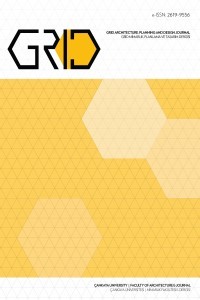Authenticity and Sustainability
Authenticity and Sustainability
To think authenticity, the cultural identity and social economic and environmental sustainability is to reflect on the values and actions that must be developed to strengthen the identity of the regions. They are inseparable components with an impact on the organization of the territory and architecture that affect everyday life and the means and modes of production. To avoid the destruction of secular structures of territorial organization, it is necessary to have a critical awareness of the heritage, to question the cultural values and the symbolic contents that define the ways of being of the populations. Action strategies have been creating tourism networks, rebuilding constructions. We only see effects of a formal contaminated recovery process. Intervention methodologies have to create dynamics that make regions attractive to live, providing quality of life and meaning to the collective future. As case study on rehabilitation in vernacular architecture we present Outeiro da Vinha, Portugal.
___
- Braungart, M., McDonoug, W. (2009). Cradle to Cradle Remaking the Way We Make Things. London: Vintage Books.
- Duarte, F. (2002). Crise das Matrizes Espaciais. São Paulo: Editora Perspectiva S. A.
- Duarte, R., Pinheiro, A.P. (2017). Apocalipse Online. Casal de Cambra: Caleidoscópio Edição e Artes Gráficas, S.A.
- Duarte, R., Pinheiro, A.P. (2009). The Power of Idea. 1st edition. Lisbon: Insidecity.
- Miranda, J., 2015. Arquitetura, Património e Autenticidade, Autenticidade na reabilitação do Património Histórico. PhD. Lisbon School of Architecture, University of Lisbon.
- Pinheiro, A.P., 2017. Reabilitação Arquitectónica, Sustentabilidade e Design. PhD. Lisbon School of Architecture, University of Lisbon.
- Ribeiro, O. (1967). PORTUGAL O mediterrâneo e o Atlântico. 3rd edition. Lisbon: Livraria Sá da Costa Editora.
- Rebelo, S. (2018). Red gold from Douro valley, Blog Salt of Portugal, 20 August.
- Távora, F., Pimentel,R., Menéres, A., Filgueiras, O., Araújo, A., Dias, C., Amaral, F., Lobo, J., Malato, J., Pereira, N., Freitas, A., Dias, F., George, F., Gomes, A., Antunes, A., Martins, A., and Castro, C., Torres, F. (1980). Arquitetura Popular em Portugal. 2nd Edition. Lisbon: Associação dos Arquitectos Portugueses.Teixeira, M. (2016). Popular Architecture, Archinews 06, Year X, Special Edition.
- The Burra Charter. 1999. https://australia.icomos.org/wp-content/uploads/The-Burra-Charter-2013-Adopted-31.10.2013.pdf [Accessed November 2018].
- The Charter on the Built Vernacular Heritage. 1999. https://www.icomos.org/images/DOCUMENTS/Charters/vernacular_e.pdf [Accessed November 2018].
- The Charter of Machu Picchu. 1977. http://orcp.hustoj.com/wp-content/uploads/2015/12/1977-The-Charter-of-Machu-Picchu.pdf [Accessed November 2018].
- The Nara Document on Authenticity. 1994. http://orcp.hustoj.com/2016/01/17/nara-document-on-authenticity-1994/ [Accessed November 2018].
- Yayın Aralığı: Yılda 2 Sayı
- Başlangıç: 2017
- Yayıncı: Çankaya Üniversitesi
Sayıdaki Diğer Makaleler
Türkiye İçin Uygun Yeşil Bina Sertifika Sisteminin Seçilmesi Üzerine Bir Araştirma
Fatma S. SAİD, Timuçin HARPUTLUGİL
Authenticity and Sustainability
Sıcak Nemli İklimdeki Konut Tasarımı Sorunları Üzerine Bir İnceleme: Libya Örneği
Eman SASİ, Gülsu ULUKAVAK HARPUTLUGİL
Mimari Tiplerin Sosyokültürel Rolü: Kültürel Sürdürülebilirlik ve Geleneğin Sunduğu Olanaklar
